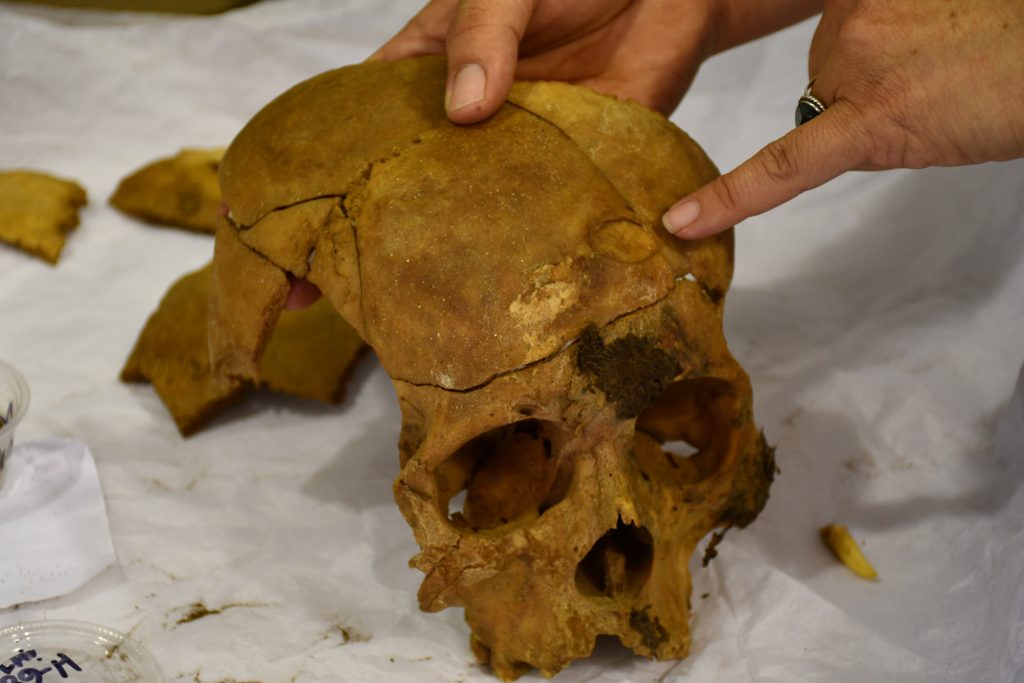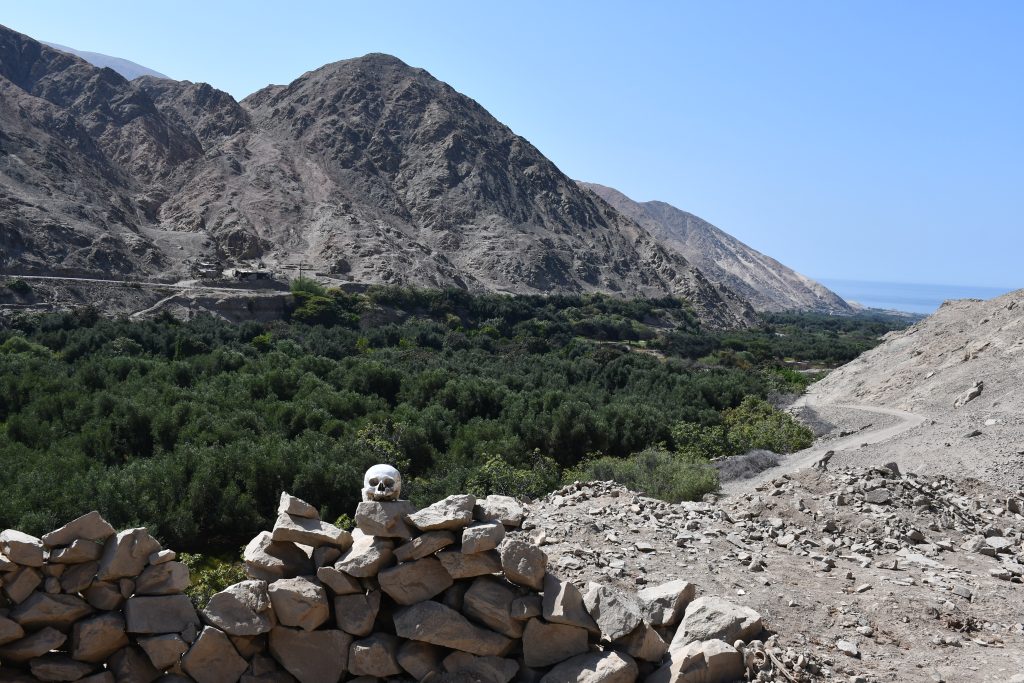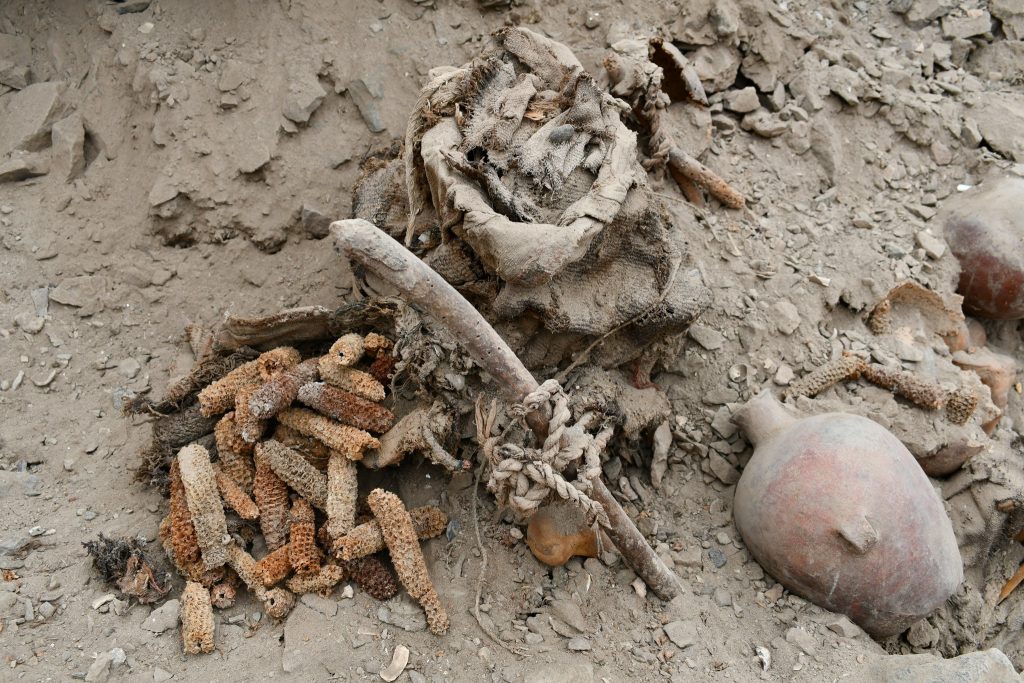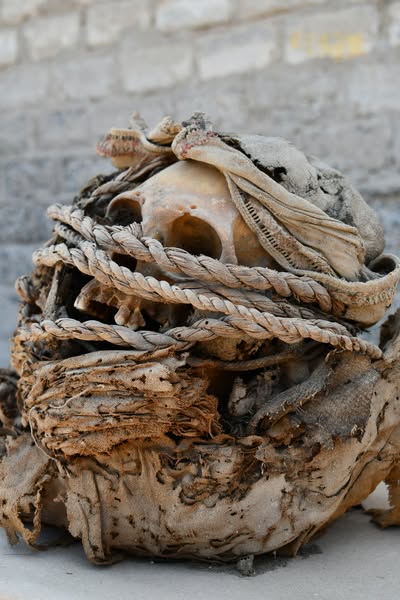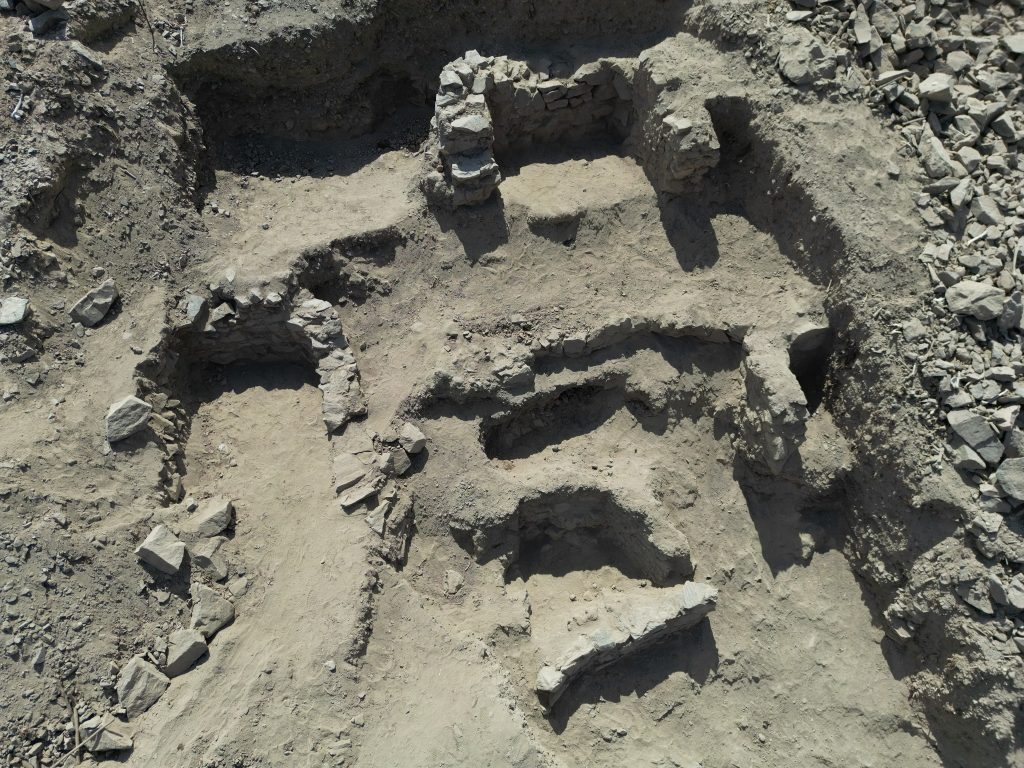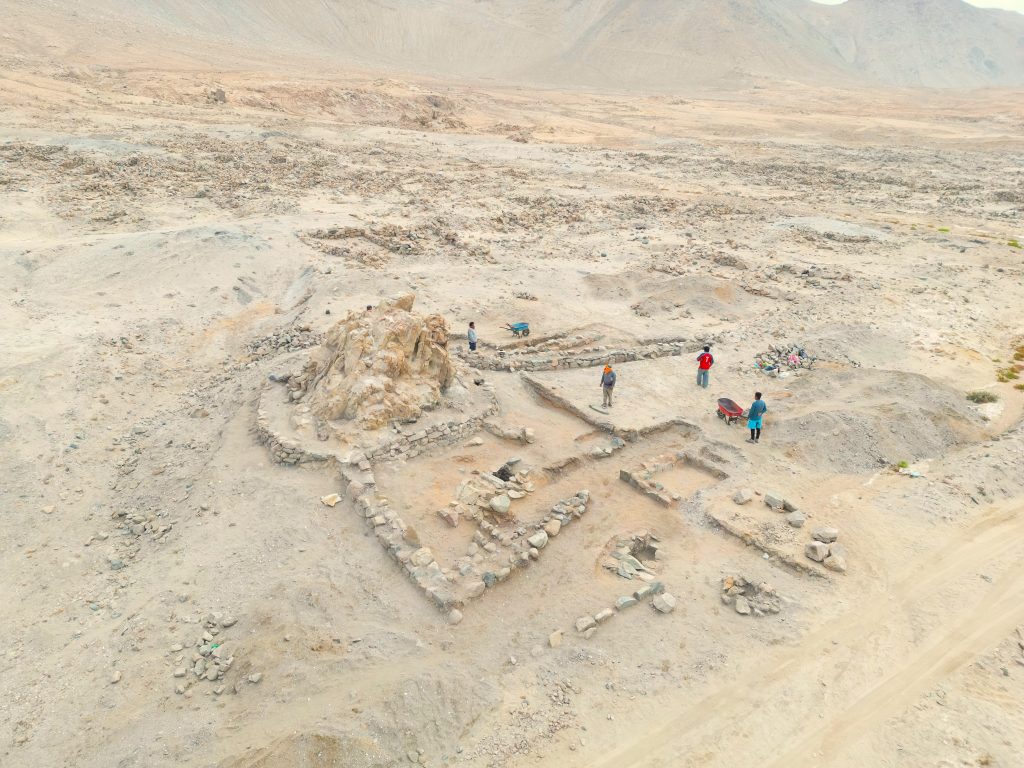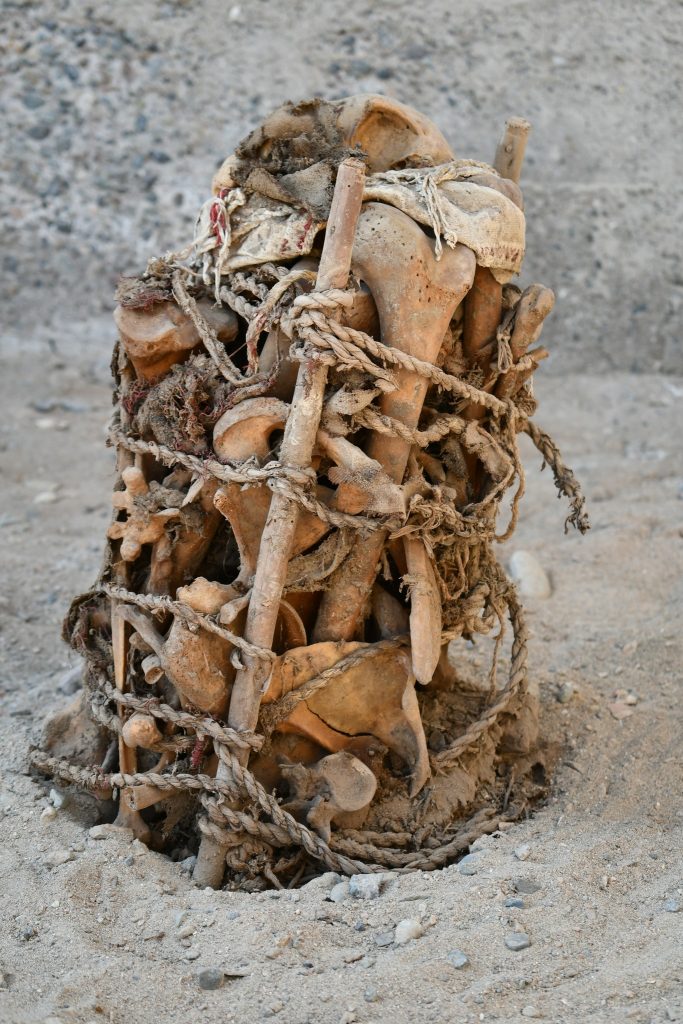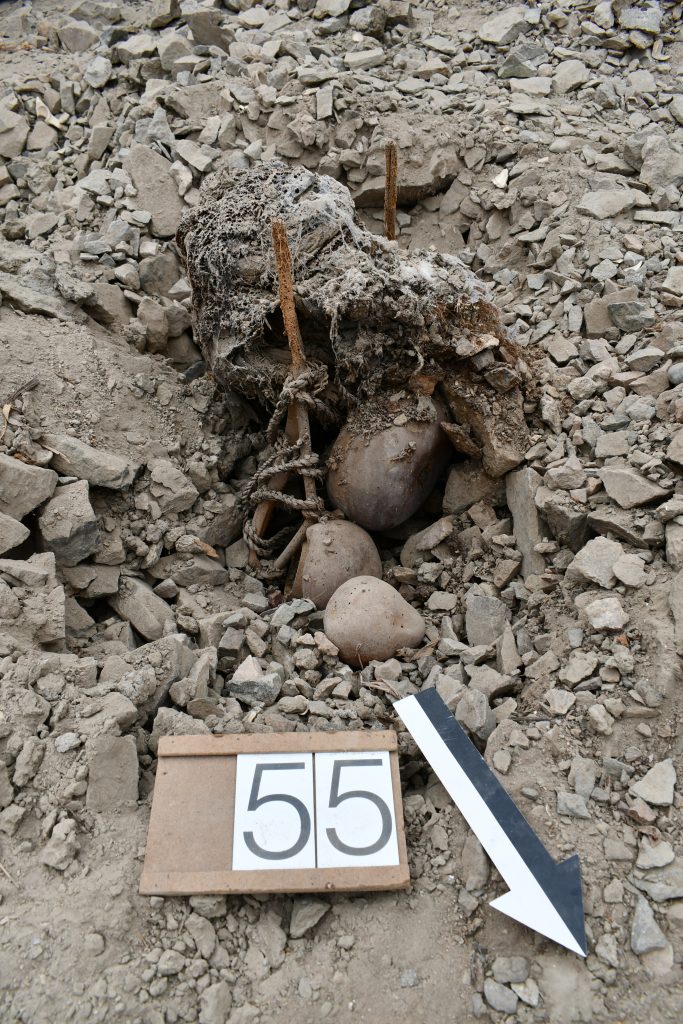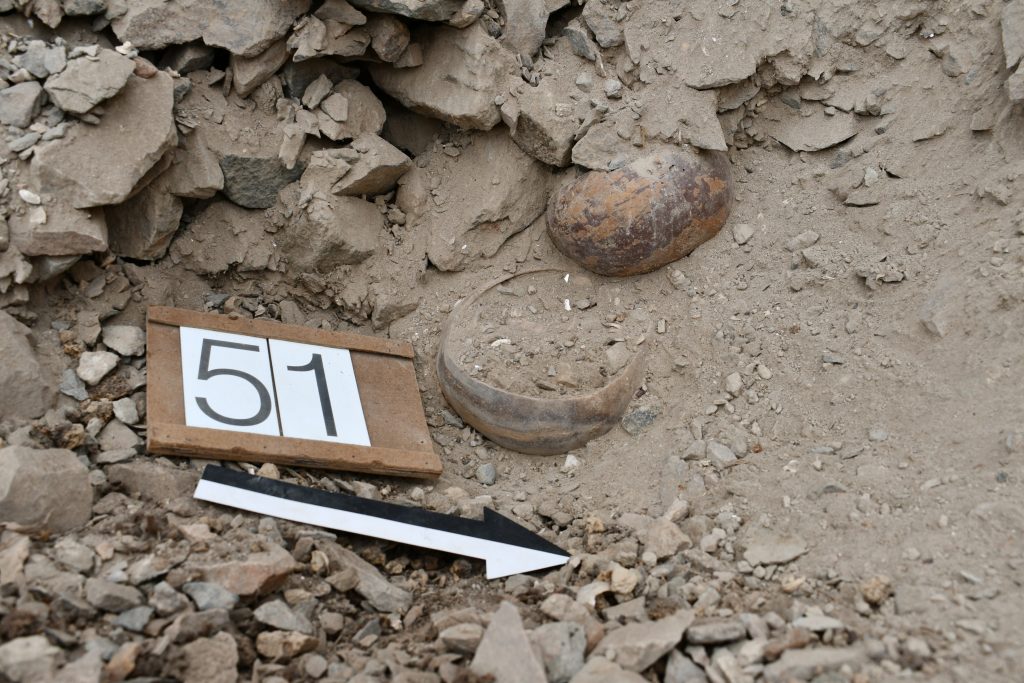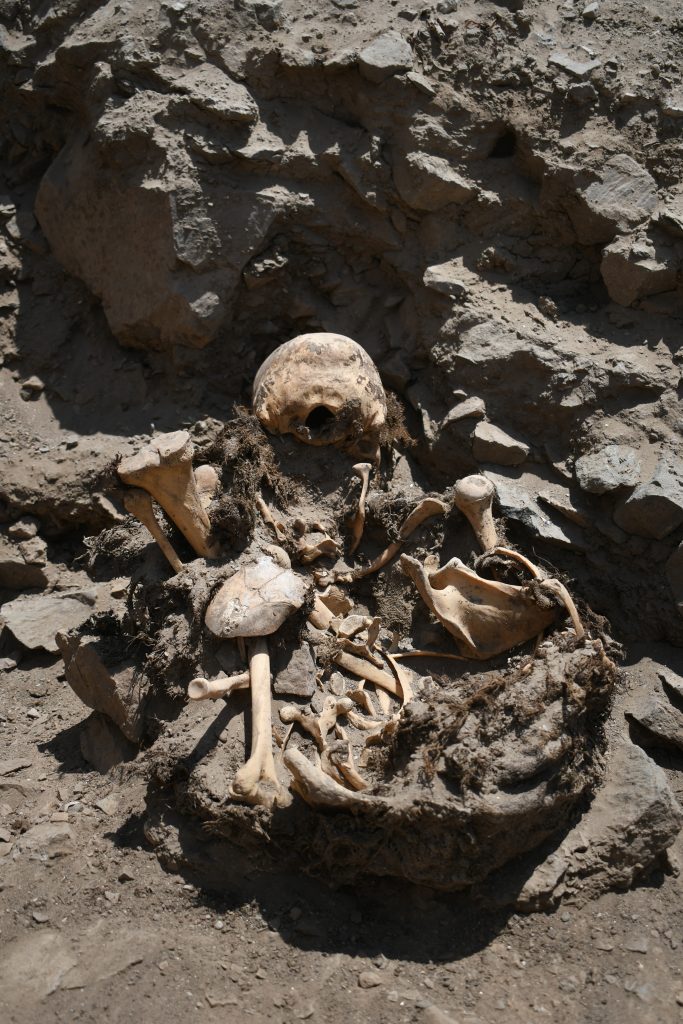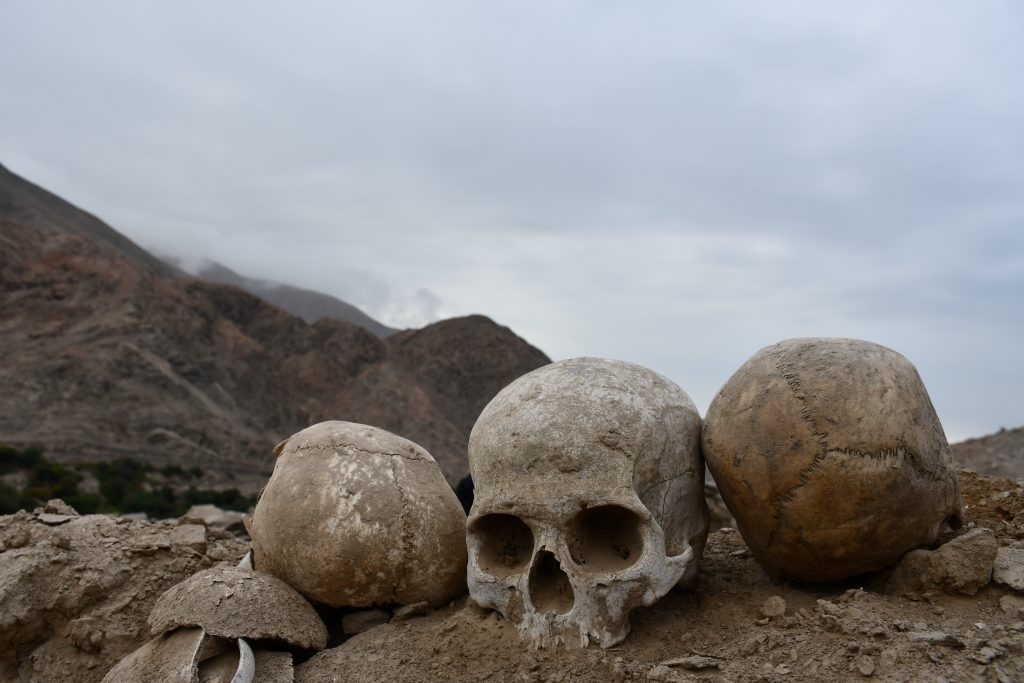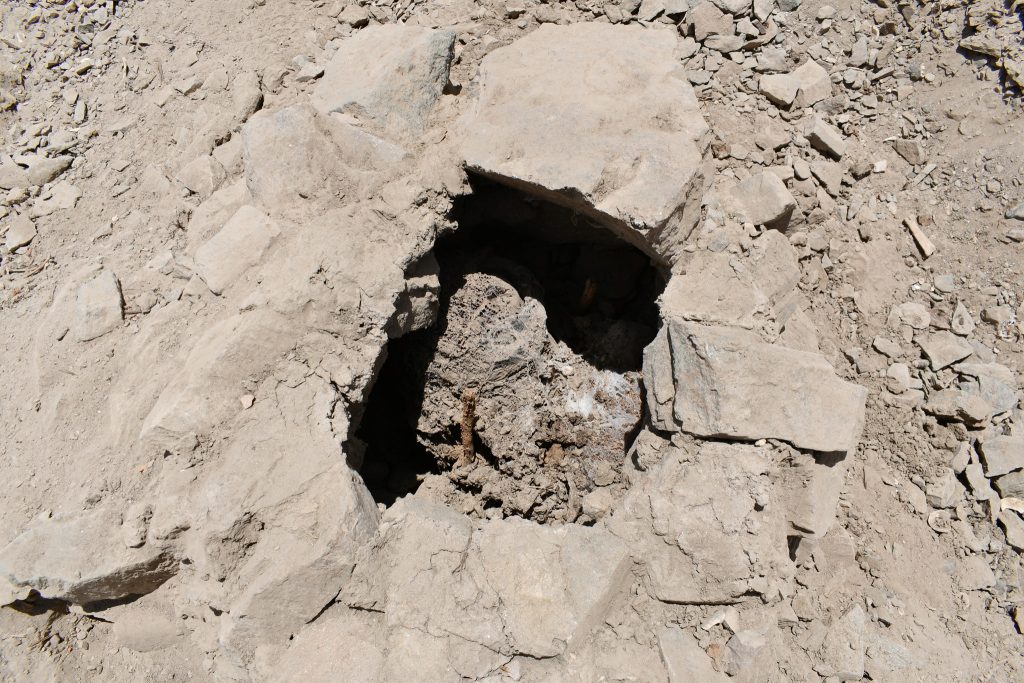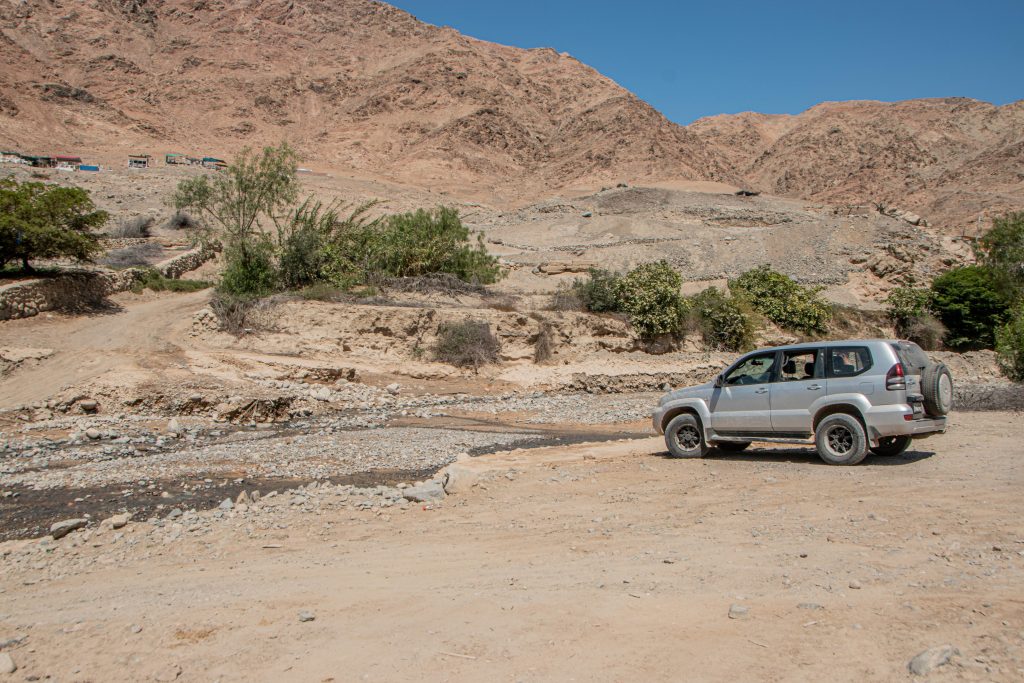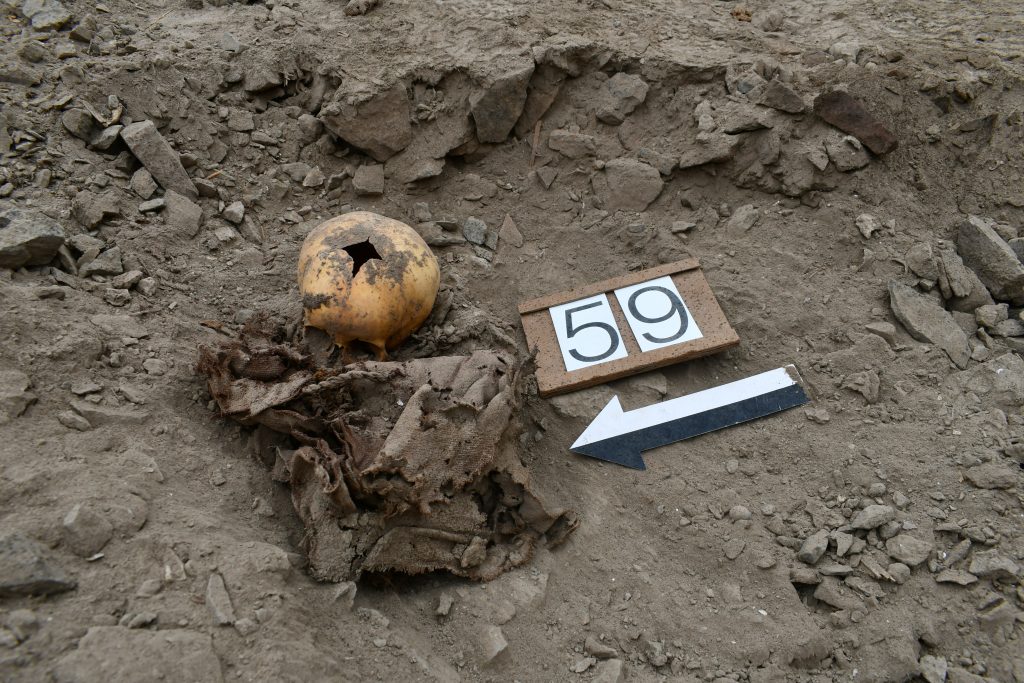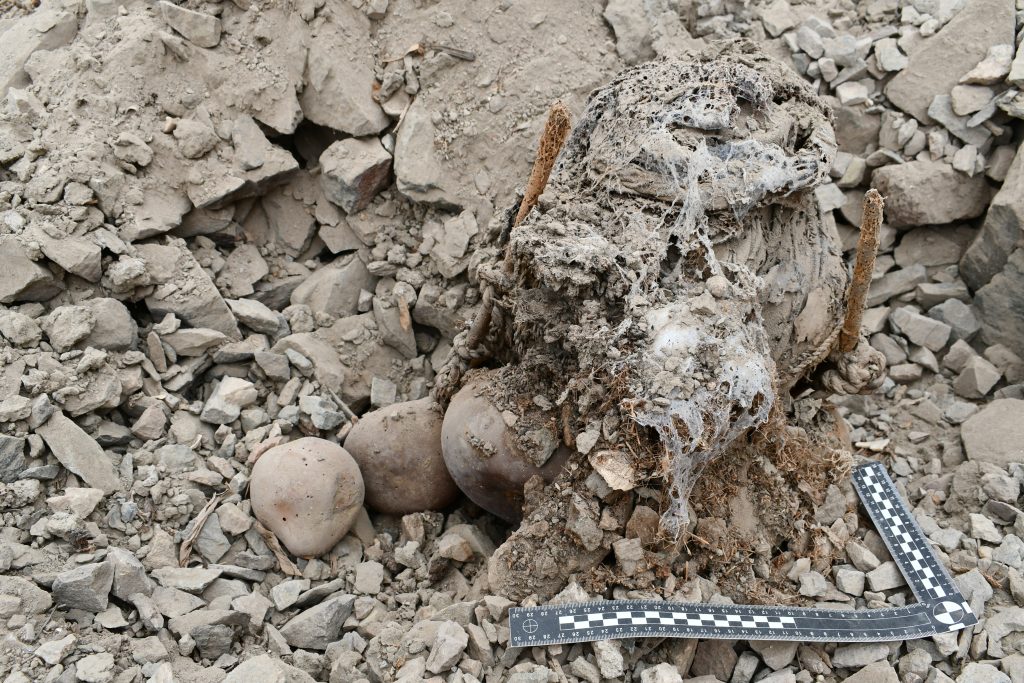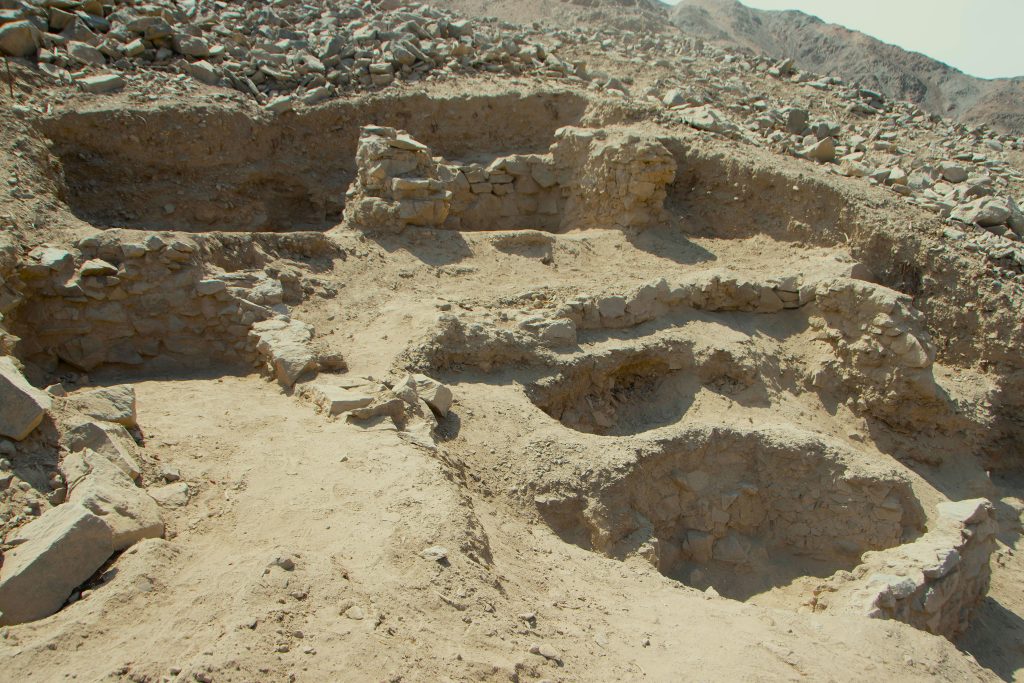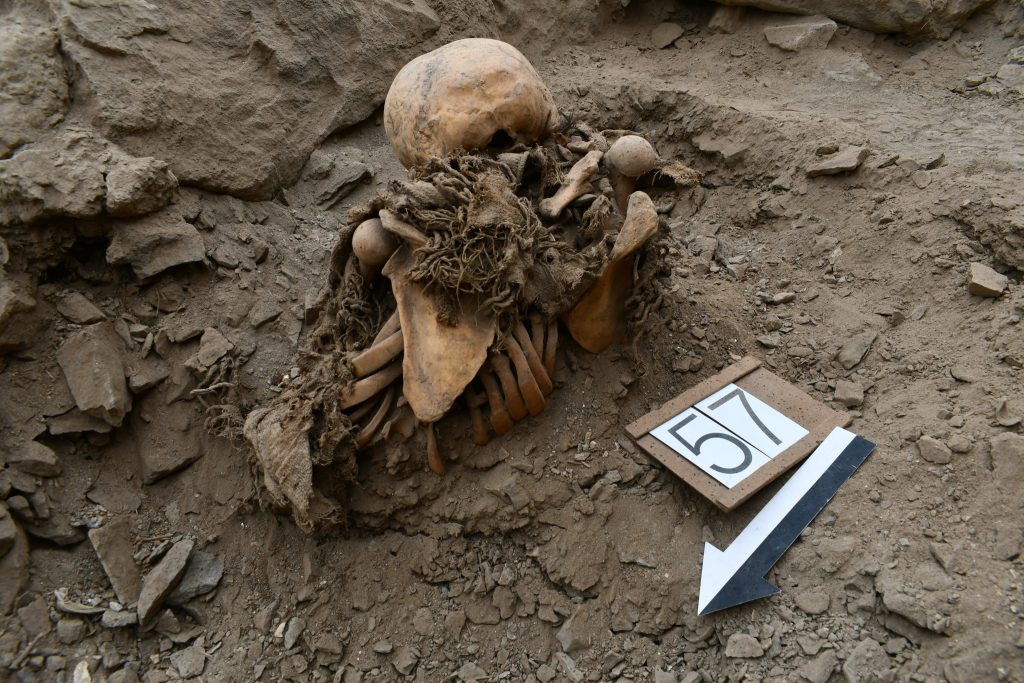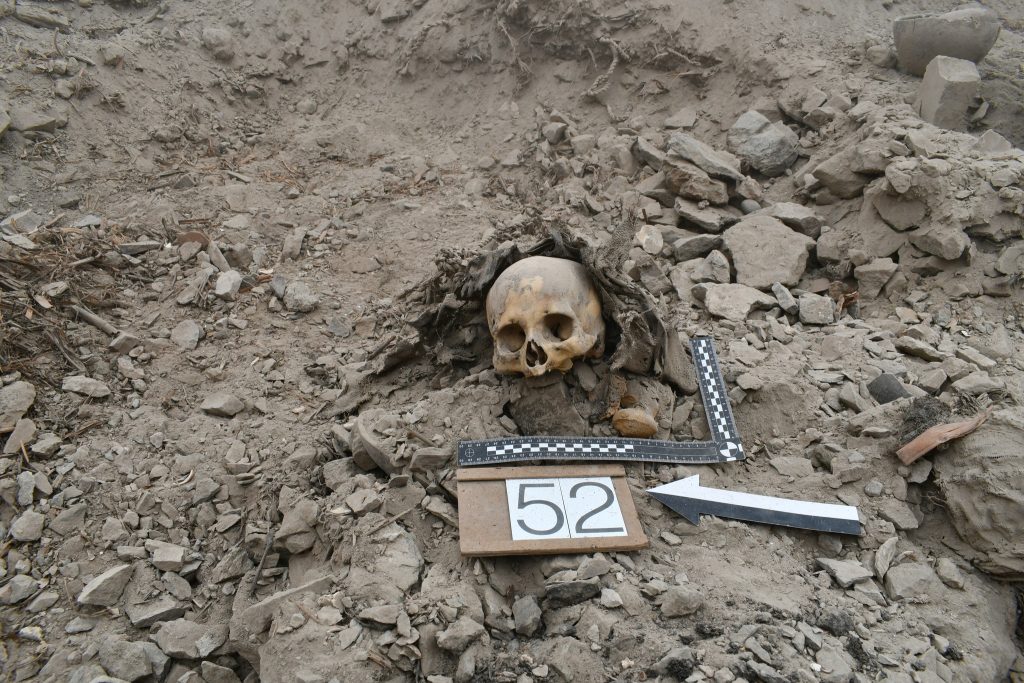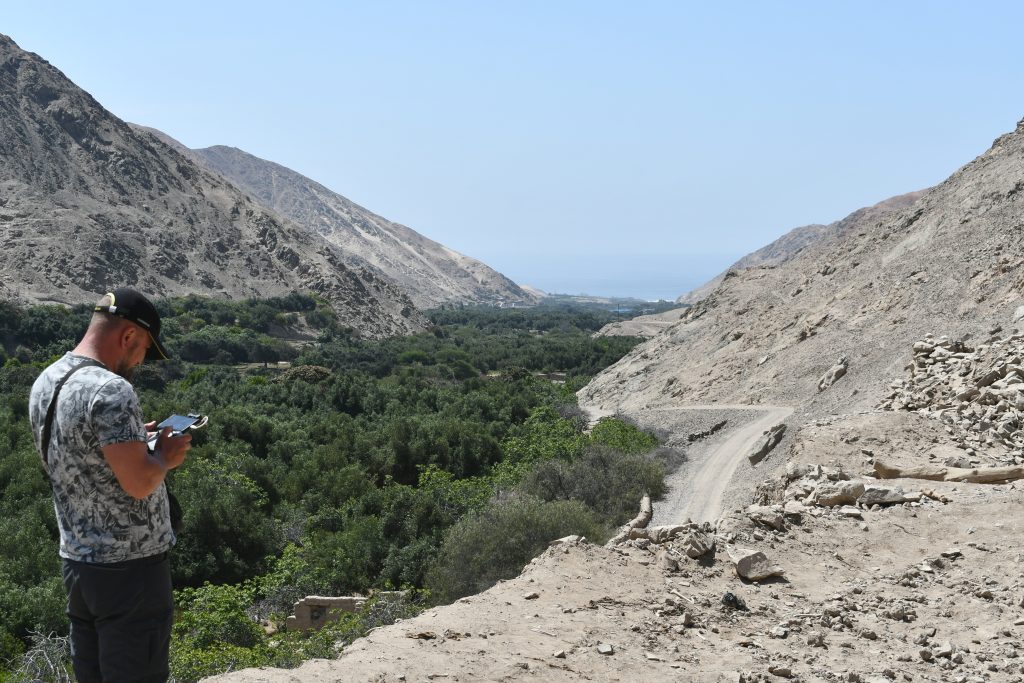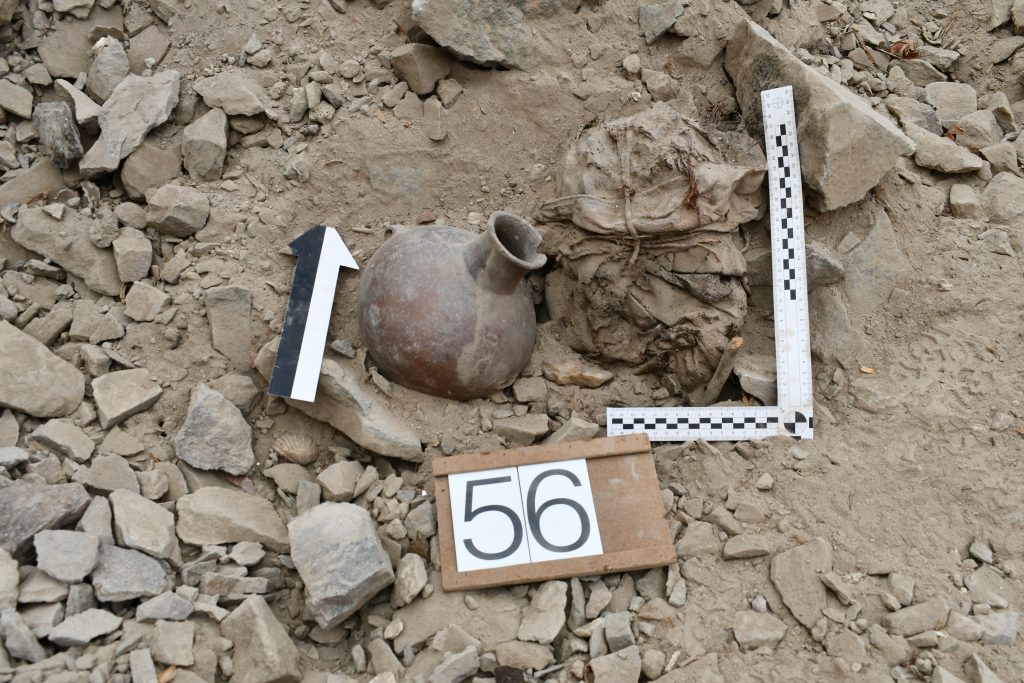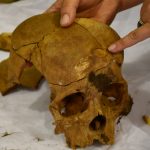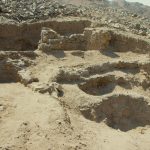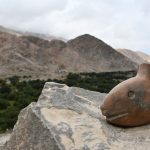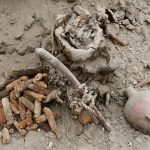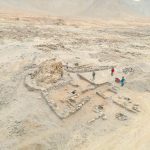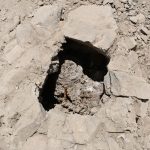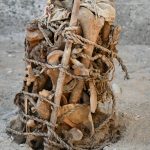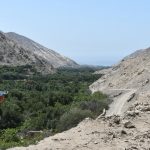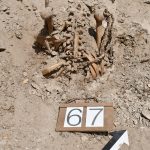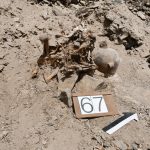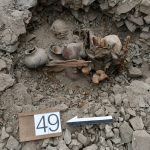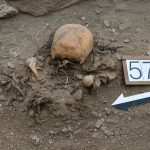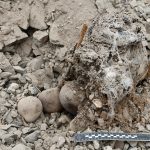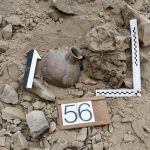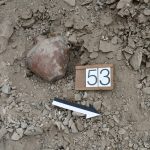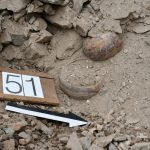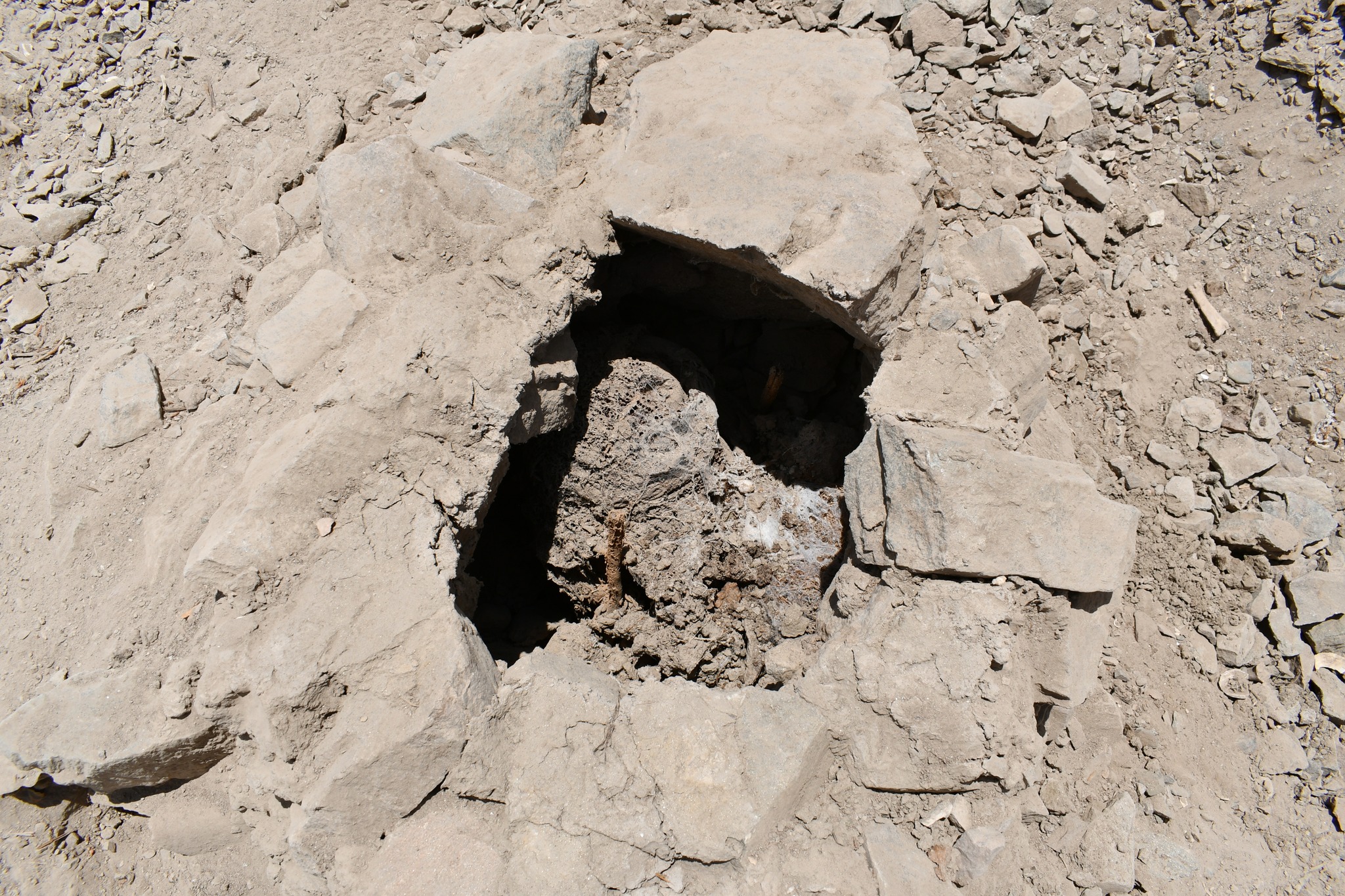
2024/2025 season
In October 2024 the Institute of Archaeology, University of Wrocław, inaugurated a further season of excavations in southern Peru. Fieldwork was carried out in the Atico River valley and on the adjacent Pacific coast. The principal focus was the multi-cultural site of El Curaca, situated in the lower course of the Atico. The investigations documented abundant evidence of prehistoric occupation representing several phases of the region’s pre-Columbian past.
Stone-built structures and richly furnished collective burials were uncovered within circular, stone-lined shafts. Sherds exhibiting early (Formative) attributes, together with bone, lithic and textile artefacts, point to strong ties with the Nasca cultural sphere, whose heartland lies c. 180 km north of Atico. Radiocarbon dating confirms that the mortuary construction belongs to the late developmental horizon of the Nasca culture.
At El Curaca a D-shaped ceremonial plaza—diagnostic of the Huari/Wari culture—was also recorded. ¹⁴C determinations from grave inventories along its periphery date the feature to the 9th–10th centuries AD. The co-occurrence of Huari/Wari textiles with local pottery of early (Formative) character indicates a resident community subject to pronounced Huari influence.
Particularly striking is a cemetery uncovered in one sector of the site. Twenty-four interments—men, women and children—were found within stone-built enclosures and accompanied by abundant grave goods. Osteological analysis revealed numerous perimortem injuries that constitute the immediate cause of death for all individuals. The associated ceramic assemblage is characteristic of the Chuquibamba (Aruni) culture, centred in the Majes River basin south of Atico. The ritual context and rich furnishings suggest that the deceased were casualties of a conflict from which their community emerged victorious, allowing them to honour their fallen compatriots appropriately.
The Atico Valley project also encompassed laboratory analyses and the conservation of numerous ceramic, textile, osseous, lithic and wooden artefacts. Particularly time-consuming were the conservation and documentation of the textiles and the three-dimensional scanning of crania.
